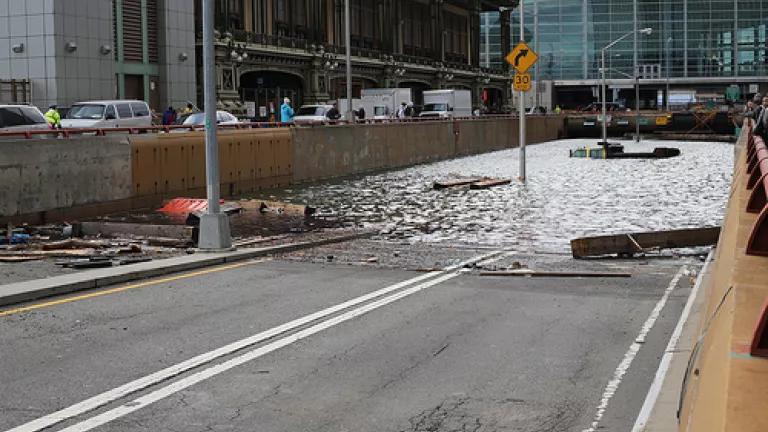
A leading body of scientists has offered an alarming view of what unchecked climate change could do to our communities. The Intergovernmental Panel on Climate Change said in a draft report that seas could rise by as much as 3 feet by the end of this century if we don’t rein in dangerous carbon pollution.
Imagine what this could mean. Children born today might witness Miami becoming part of the Everglades, New Orleans sinking underwater, and parts of New York looking more like Venice.
This isn’t some disaster movie scenario. The Nobel-Prize-Winning IPCC includes the foremost experts in the field. If they say unchecked climate change could inundate our coasts, we should listen. We owe it to future generations.
The IPCC could fine-tune the wording of its draft before making its report public a few weeks from now in Stockholm. The central points, though, won’t change. After all, we’re already seeing the disruptive power of climate change today.
Rising seas are already backing up storm sewers in Miami Beach and flooding city streets at high tide. The storm surge from Sandy already devastated New York’s low-lying neighborhoods and infrastructure. Repairing the subway system alone will cost an estimated $5 billion; adapting it to handle future flooding will require billions more.
New York's Battery Park Tunnel was flooded by Superstorm Sandy
Many cities are trying to adjust to the changing climate. Boston’s Water and Sewer Commission, for instance, now factors sea level rise and storm intensity into infrastructure plans. These initiatives will help make us more resilient, but adaptation will not solve the problem.
We need a national push to confront climate change at its source: carbon pollution.
President Obama’s new climate action plan will help get us there. It calls for setting limits on carbon pollution from power plants—the largest source of global warming emissions in the country.
The Environmental Protection Agency has the authority under the Clean Air Act to create these standards, and it can begin right now to craft a program that will help all 50 states reduce dangerous pollution. NRDC’s experts outlined a similar approach, and we concluded it can cut carbon pollution 26 percent by 2020 and save people money on electricity bills. This represents real and far-reaching carbon reductions.
Carbon standards are one of our most effective ways for addressing climate change. Yet some lawmakers still refuse to acknowledge the climate threat or the role people play in it.
The IPCC draft report has a clear message for these deniers: “It is extremely likely that human influence on climate caused more than half of the observed increase in global average surface temperature from 1951 to 2010. There is high confidence that this has warmed the ocean, melted snow and ice, raised global mean sea level and changed some climate extremes in the second half of the 20th century.”
How confident are the scientists? There is 95 percent certainty that humans are causing climate change. That settles that.
It is time to leave behind the distractions of climate deniers and confront this crisis. American communities are already rising to the challenge, becoming better prepared and more resilient. Now we must join together as a nation and reduce the carbon pollution that causes climate change. This is how we can honor future generations and protect them from the worst impacts described by the IPCC.
Photo credit: Timothy Krause
